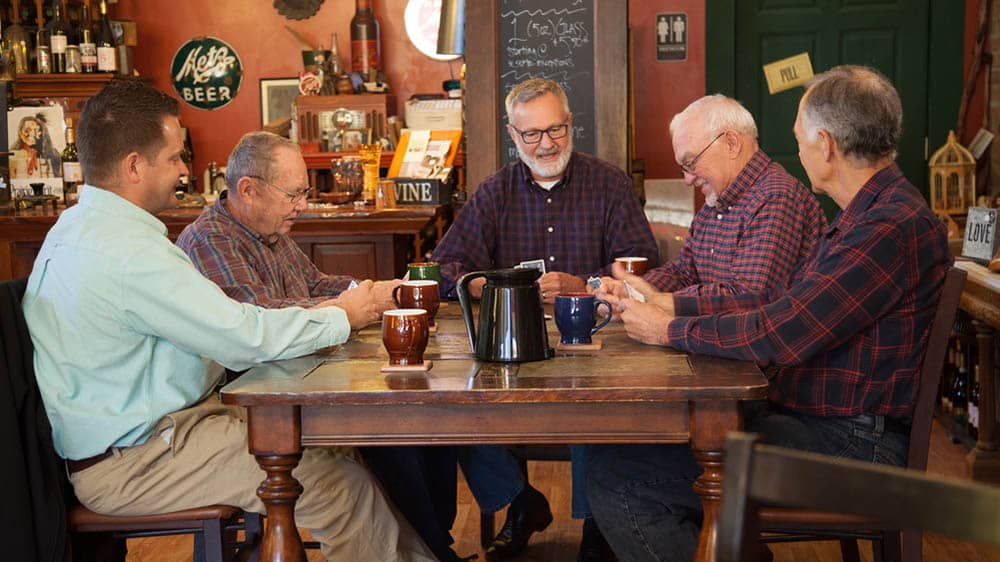

Cold-Weather Safety Planning for Seniors
How To Keep Seniors Warm, Healthy, and Safe in Winter Weather
No matter how many winters an older adult has experienced, cold-weather readiness is the best way to ensure they remain warm, healthy, and safe. Icy weather puts older adults at greater risk of hypothermia, frostbite, and falls. Medical conditions can also make it harder for older adults to stay warm.
Transportation Tips for Colder Weather
Transportation can be an issue when roads are snow-packed or ice-packed and have low visibility. That’s why seniors or their caregivers should make sure food, water, and prescription medications are stocked before bad weather arrives and things get too treacherous for pickup or delivery. Seniors should avoid driving or being driven when roads are bad, as they don’t want to find themselves stuck or stranded in arctic conditions.
If the older adult drives or you, as the caregiver, drive their car, ensure it’s fully gassed, the engine is in good working order, and the tires are well inflated. Also, bring a shovel, window scrapers, a bag of sand or rock salt, a charged cellphone, blankets, and snacks.
Even brief doses of extreme cold can risk frostbite, so seniors going out in the cold, even to drive, retrieve curbside mail, or sweep the porch and sidewalk, need to layer and cover themselves, ideally leaving no bare skin exposed.
Hypothermia Can Happen Indoors Also
Most of us consider outdoor exposure the main risk during cold weather, but staying sufficiently warm inside one’s home can be challenging if the power goes out and the furnace fails. Indoors or out, once the body’s internal temperature drops below a certain level, the danger of hypothermia becomes real.
Hypothermia sets in when the body’s temperature falls below 95°F due to exposure to cold. It can lead to serious health consequences such as irregular heartbeat and organ damage. Warning signs may include:
- Cold feet and hands.
- Puffy or swollen face.
- Pale skin.
- Shivering or shaking.
- Slowed or slurred speech.
- Feeling sleepy, angry, or confused.
If you suspect an older loved one is experiencing hypothermia, call 911. Try moving the person to a warm spot, see if they can tolerate warm fluids, and wrap them in blankets, towels, or coats.
Health Conditions Can Make It Challenging To Stay Warm
Staying healthy in cold climates comes down to preventive measures that seniors can follow or that you, as the caregiver, can help them follow. Here are some things to keep in mind when it comes to older adults, staying warm, and the challenge presented by some health conditions:
- Diabetes and thyroid disease can impede the body’s ability to maintain an average temperature, which can trigger feeling cold. Compensate by keeping the thermostat up and layering clothing, even indoors.
- Parkinson’s disease and arthritis can make it challenging to put on extra layers of clothes, so accepting or lending help with getting dressed is a good thing.
- Older adults with memory or cognitive issues may need reminders, checks, or assistance to dress appropriately for cold weather. Caregivers should make sure the older adult has everything needed in the event of getting snowed in.
- Eating right is always important, but people generally need to consume more calories in cold weather to keep their energy and strength up. Getting enough healthy calories can be tough for seniors any time of year, but a poor diet in cold weather can reduce one’s immunity to illness. Caregivers can help ensure the senior gets adequate nutrients. A diet of vitamin D-rich foods such as fish, milk, yogurt, orange juice, and oatmeal is recommended to maintain a healthy immune system.
Cold-Weather Safety Checklist
Before winter sets in, make a checklist of things to do and supplies to have on hand. The checklist should include the following:
- Have a qualified professional check the home heating system before using it each fall to make sure it is in good working order.
- Fill prescription medications to ensure that none run out in a weather emergency.
- Stock up on at least a week’s supply or, if possible, a month’s supply of food, water, toilet paper, soap, first aid products, batteries, ice melt, and other essentials.
- Keep a handy list of phone numbers of friends, family members, physicians, pharmacies, and emergency response contacts.
- In advance of a snowstorm or ice storm, arrange for a friend, relative, neighbor, or contractor to clean the sidewalk, driveway, porch, or patio as needed.
- If going outside in snow-packed or ice-packed conditions is unavoidable, bundle up in layers of clothes to protect against the cold and help absorb the impact of a fall. Wear nonskid shoes or boots, take little steps, and utilize a cane, railing, or whatever is sturdy and handy as a brace.
- Don’t try shoveling if not in shape to do it. Leave it to a relative, friend, neighbor, or contractor to remove excess snow and ice and apply ice melt or sand. Low-income seniors can check with their local Area Agency on Aging about free snow/ice removal services.
- After coming in from tramping in the snow, remove shoes or boots on a surface where they can dry without residue leaving a slick area that would create a risk of slipping and falling.
Other General Cold-Weather Tips
- Hydration: Contrary to popular belief, hydration is not just a warm-weather replenisher; it’s a key year-round bodily need that becomes even more important for older adults in cold weather. Aging makes it harder for the body to retain water, and combined with cold conditions and medications, it can lead to moisture depletion.
- Skin Care: Dry, brittle skin is common with aging and dehydration. Without proper moisturizing, skin can crack or even bleed, leading to infection if left untreated. To avoid cracking, use a moisturizing cream daily, especially after showering or bathing.
- Layering: It really is true that wearing layers of insulating but also breathable clothing best protects against the cold. Just don’t overdo it and risk overheating or restricting free, easy movement.
- Conduct a Home Audit: Energy efficiency can make a big difference in home comfort during winter. In addition to having a professional check the heating system, consider hiring a professional to check the attic’s insulation if living areas are consistently cooler than they should be. To avoid cold drafts and loss of heat, install weather stripping around windows and doors, draw drapes, and close doors and vents in rooms that don’t get used to avoid wasting heat where it’s not needed.
- Keep the Thermostat Up: The National Institute on Aging recommends setting home heat to a minimum of 68°F to 70°F. Low-income seniors having trouble paying high electric bills can apply for the Low-Income Home Energy Assistance Program (LIHEAP), which provides eligible home dwellers with bill payment assistance, weatherization, and energy-related home repairs. Inquire at 1-866-674-6327.
- Space Heaters, Electric Blankets, and Furnaces: While space heaters and electric blankets can be extra guards against the cold, they should be used sparingly and with caution. Never operate these products unattended, as they can overheat, creating burn or fire hazards. Replace any portable heating device that has frayed electrical cords. Never use a gas oven for the express purpose of heating the kitchen or the house. Faulty gas furnaces can release dangerous levels of carbon monoxide, an odorless, potentially lethal gas, so it’s important to get a furnace inspection and install a carbon monoxide detector or replace a nonworking one.
How Right at Home Can Help
Right at Home offers a range of in-home care services for seniors and adults with disabilities. We’ve been helping keep older adults safe and warm in the comfort of their homes for over 25 years. Download our FREE Cold-Weather Safety Plan Checklist to help you ensure you and your loved ones are ready for cold weather, or use our office locator to speak to the office nearest you for more information.
Interested in receiving ongoing information, advice, and tips related to the aging journey? Subscribe to our monthly Caring Right at Home e-newsletter today!







